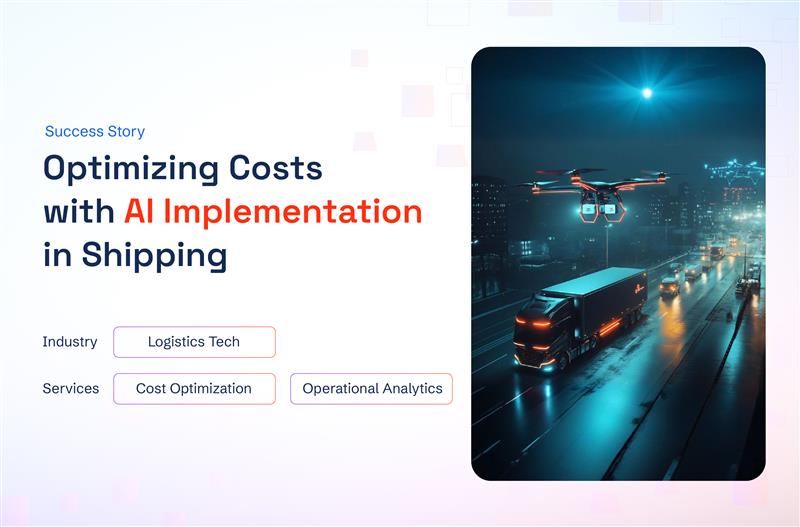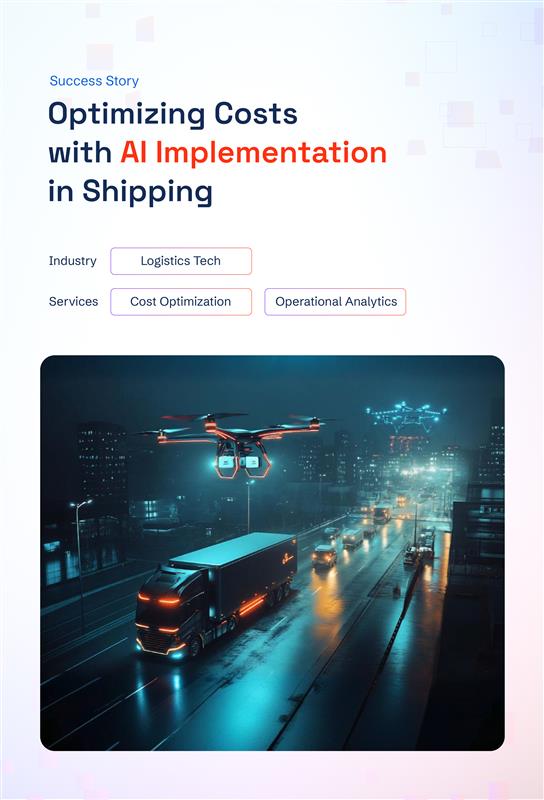Secure Your Enterprise Data with Expert Data Governance Consulting
Protect your data estate with our enterprise-ready data governance solutions – KANGovern, KANGuard, and KANComply. Powered by Microsoft Purview, Databricks Unity Catalog, Concentric AI, and other governance tools, these solutions help you stay compliant, reduce risk, and build trust across your data ecosystem.
Fewer Data Access Violations
Reduction in Manual Governance Tasks
Accuracy in Data Classification
Get Started with Data Governance Solutions












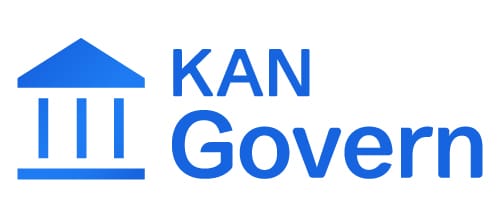
Stronger Governance, Better Data Integrity
Strengthen your enterprise data governance with KANGovern, powered by Microsoft Purview and Databricks Unity Catalog. Our solution helps organizations discover, catalog, and manage their data through an industry-specific business glossary and unified data catalog.
Centralize Data Management
Centralize your data assets with a unified platform, simplify data accessibility and management
Enhance Communication
Maintain consistent terminology, enhance communication with a tailored business glossary

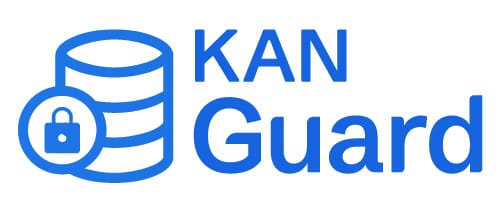
Robust Frameworks, Enhanced Accountability
Protect your organization's sensitive data across M365 applications. With Data Loss Prevention (DLP), classification, and labeling, KANGuard ensures comprehensive security while managing sensitive information effectively.
Improving Information Security
Identify and classify sensitive information automatically to bolster security measures and regulatory compliance
Preventing Data Breaches
Enforce comprehensive controls to detect and prevent data breaches, ensuring rigorous protection of information

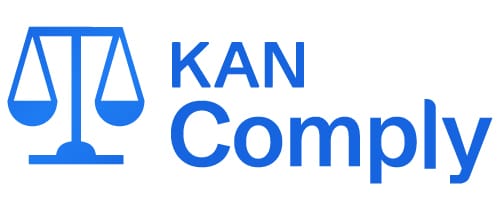
Fortified Defenses, Protected Information
Meet global regulatory requirements with KANComply, a comprehensive solution that helps organizations assess and maintain compliance with over 360 international regulations, standards, and frameworks including GDPR, CCPA, and HIPAA- powered by Databricks Unity Catalog, Microsoft Purview, and Concentric AI
Meet Global Compliances
Develop and enforce robust compliance policies, streamline audits and ensure adherence to international standards
Implement Robust Security
Apply security protocols to avert unauthorized data sharing and safeguard sensitive information

Achieving Strategic Outcomes with Effective Data Governance Services
Our comprehensive suite of data governnace solutions—KANGovern, KANGuard, and KANComply—is designed to transform your organization’s data management, security, and compliance capabilities
KANGovern Outcomes
- Enhances data quality and decision-making.
- Fosters secure, innovative solution development.
- Streamlines governance for operational excellence.
- Uses Microsoft Purview, Databricks Unity Catalog
KANGuard Outcomes
- Protects critical data and intellectual property.
- Builds trust and enhances brand reputation.
- Reduces financial risks from data breaches.
- Uses Microsoft Purview, Databricks, and Concentric AI
KANComply Outcomes
- Ensures compliance, minimizes legal risks.
- Boosts reputation, simplifies audit processes.
- Secures business continuity and data integrity.
- Uses Microsoft Purview, Concentric AI
Smarter Data Governance Services That Drives Compliance and Control
Watch how our data governance consulting services help safeguard data, streamline compliance, and enforce governance across your data landscape.
Case Studies: Data Governance Implementation Expertise
As one of the reputed data governance consulting firms, we help enterprises strengthen compliance, reduce risk, and enforce control with scalable, real-world data governance solutions.
Data Governance
Mastering Data Governance with Microsoft Purview Implementation
Impact:
- 57% Reduction in Data Discovery Time
- 90% Increase in Compliance Adherence
- 70% Enhancement in Data Accessibility
Data Governance
Transforming Data Governance for a Leading Bank with Microsoft Purview
Impact:
- 0% Data Breaches
- 100% Adherence to Compliance Regulations
- 15% Increase in Loyal Customers
IMPACT Framework for Data Governance Excellence
At Kanerika, we leverage the IMPACT methodology to drive successful data governance projects, focusing on delivering tangible outcomes.
Why Choose Kanerika?
Trusted by leading organizations, our data governance expertise and commitment to excellence distinguish us in the industry. Partner with us to ensure your data is managed with the highest standards of security, accuracy, and compliance.

We build dynamic, industry-specific compliance frameworks that are robust and adaptable to your regulatory environment, meet market and local compliances.

We prioritize long-term partnerships, offering continuous system reviews and updates to ensure your data governance strategies evolve with your business needs.

INNOVATE
Diverse Industry Expertise

Banking
Enhance data integrity, privacy, and compliance through centralized governance frameworks powered by Microsoft Purview.

Insurance
Ensure policy data accuracy, improve risk visibility, and maintain compliance using governed frameworks that unify data lineage and access control.

Logistics & SCM
Implement governed data structures to standardize supplier, and route details, improving traceability, accountability, and compliance across logistics networks.

Manufacturing
Use Databricks and Microsoft Purview to govern production, quality, and sensor data, ensuring consistency, security, and visibility across manufacturing.

Automotive
Leverage governed data frameworks to integrate production, supplier, and design data for compliance and accurate insights.

Pharma
Apply centralized governance to clinical and regulatory data, ensuring lineage, validation, and compliance for pharmaceutical workflows.

Healthcare
Implement robust governance frameworks to safeguard patient data, ensure compliance, and enable secure healthcare information exchange.

Retail & FMCG
Enhance data consistency, accuracy, and security across sales, customer, and supply chain systems, enabling compliant and data-driven retail operations.
Empowering Alliances
Our Strategic Partnerships
The pivotal partnerships with technology leaders that amplify our capabilities, ensuring you benefit from the most advanced and reliable solutions.
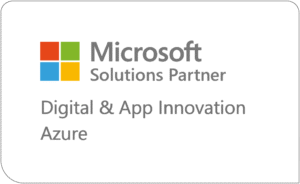
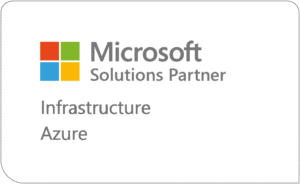
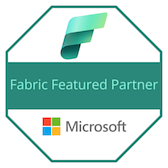
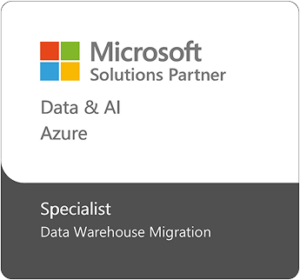
Frequently Asked Questions (FAQs)
Enterprise data governance brings order to scattered information through automated discovery and classification. Modern platforms scan SharePoint libraries, Teams channels, and legacy databases to create unified catalogs with consistent metadata. This eliminates data silos, removes duplicate datasets, and establishes clear ownership protocols. Organizations typically see 40-60% reduction in data retrieval time and much better decision-making accuracy. Our data governance framework approach shows how to streamline this transformation across hybrid environments without disrupting existing workflows.
Building a unified catalog starts with automated discovery tools that work across different naming conventions. Smart platforms use AI to standardize terminology and create business glossaries that bridge departmental language gaps. Start small with high-impact datasets, establish common standards, then gradually expand coverage. Most enterprises achieve 80% catalog completion within 6-9 months. These proven data governance principles respect existing workflows while bringing departments together through consistent metadata and shared understanding.
Effective data policies embed governance into natural workflows instead of creating additional steps. Smart policy design uses automated classification, role-based access controls, and contextual guidance that appears when needed. The key is involving business stakeholders in policy creation, ensuring rules make practical sense, and clearly communicating value. Organizations implementing user-friendly policies see 70% higher adoption rates and fewer compliance violations. Our data governance best practices guide shows how to enhance security while maintaining productivity and user satisfaction.
Modern governance frameworks prioritize automation over manual processes and use risk-based approaches for better balance. Apply lighter controls to low-risk data and stricter governance only where necessary. Frameworks like DAMA-DMBOK and COBIT work well when adapted to your specific business needs rather than implemented as rigid standards. Key components include clear data stewardship roles, automated policy enforcement, and continuous monitoring. Organizations using adaptive frameworks report 45% faster project delivery without compromising compliance. Discover practical governance framework strategies that accelerate business outcomes while maintaining security.
AI-powered governance platforms eliminate 80-90% of manual classification work through intelligent scanning, pattern recognition, and automated tagging. Modern tools analyze content context, data relationships, and usage patterns to suggest classifications and track lineage automatically. Machine learning algorithms improve accuracy over time, reducing false positives and missed sensitive data. Integration with existing tools ensures seamless workflow adoption. Teams can focus on strategic work instead of repetitive classification tasks. These automated governance tools transform manual processes into intelligent, hands-off operations that scale with your data growth.
Improving data quality requires continuous monitoring rather than periodic audits. Implement automated quality rules that check completeness, accuracy, and consistency in real-time as data moves between systems. Establish data stewardship workflows that flag anomalies and route them to appropriate teams for resolution. Use data profiling to understand baseline quality metrics and track improvements over time. Organizations using automated quality management see 60% fewer data errors and 35% faster issue resolution. Explore data governance pillars including quality management strategies that maintain high standards in dynamic environments.
Data governance creates single sources of truth by standardizing business definitions, calculation methods, and data lineage documentation. Centralized business glossaries ensure everyone uses consistent terminology and understands metric origins. Automated lineage tracking reveals how metrics flow from source systems through transformations to final reports. This visibility prevents conflicting interpretations and builds confidence in analytics. When properly implemented, governance reduces reporting discrepancies by 70% and accelerates decision-making. Discover governance solutions that establish trusted enterprise metrics and eliminate reporting confusion.
Scalable access control requires automated provisioning tied to HR systems and role-based permissions that adjust dynamically with organizational changes. Modern identity governance platforms sync with Active Directory, automatically updating data access when employees move roles or leave the organization. Attribute-based access control (ABAC) provides granular permissions based on current job functions, projects, and clearance levels. Regular access reviews ensure permissions remain appropriate over time. Organizations using automated access management reduce security risks by 65% while improving user productivity. Learn about comprehensive data governance solutions that include automated access control and identity management capabilities.
Data governance programs fail when they prioritize technology over people and processes. Common pitfalls include unclear ownership, overly complex policies, lack of executive sponsorship, and insufficient change management. Successful programs start small, demonstrate quick wins, and gradually expand scope. They focus on business value rather than compliance checkboxes, involve stakeholders in design decisions, and provide ongoing training and support. Organizations avoiding these mistakes achieve 85% governance program success rates. Learn from common data governance challenges and proven solutions for sustainable implementation that actually works.
Automated governance maintains continuous audit readiness through real-time compliance monitoring, automated evidence collection, and comprehensive audit trails. Modern platforms track data access, modifications, and policy compliance automatically, creating detailed reports that satisfy auditor requirements. Automated workflows ensure proper documentation, approval processes, and retention policies are consistently followed. This preparation reduces audit time by 60-80% and eliminates last-minute scrambling for evidence. Organizations with automated governance experience smoother audits and faster compliance validation. Discover how automated governance solutions streamline audit preparation and maintain continuous compliance readiness across regulatory frameworks.
Successful business glossaries focus on practical utility rather than academic completeness. Start with high-impact terms that cause confusion in daily operations, involve subject matter experts in definition creation, and use plain language that business users understand. Integration with analytics tools and data platforms makes glossary terms accessible in context. Regular reviews ensure definitions stay current with business evolution. Gamification and feedback mechanisms encourage adoption and continuous improvement. Well-designed glossaries achieve 80% user adoption and reduce miscommunication around data definitions by 70%. Learn about data governance frameworks that include effective business glossary development and implementation strategies.
Governing sensitive data across platforms requires unified classification schemes and automated protection policies that follow data regardless of location. Modern governance solutions scan cloud storage, email attachments, and collaboration platforms to identify and label sensitive content consistently. Integration with Microsoft 365, Google Workspace, and cloud platforms ensures seamless policy enforcement. Real-time monitoring alerts administrators to unusual access patterns or potential violations. This comprehensive approach reduces data exposure risk by 75% while maintaining user productivity. Our governance solutions maintain protection across all collaboration tools without disrupting workflows.
Data governance reduces operational risk by establishing clear accountability, automated compliance monitoring, and proactive risk identification. Regulatory frameworks like GDPR, HIPAA, and SOX require specific data handling procedures that governance platforms enforce automatically. Continuous monitoring detects policy violations before they become compliance issues. Proper documentation and audit trails protect against regulatory penalties and demonstrate due diligence. Organizations with mature governance programs experience 80% fewer compliance incidents and significantly lower regulatory risk exposure. Explore our industry-specific governance examples that show real-world risk reduction strategies.
Governance enables trusted enterprise intelligence by standardizing data definitions, ensuring quality controls, and providing clear lineage documentation. Unified data catalogs break down silos by making enterprise data discoverable and understandable across departments. Automated quality monitoring builds confidence in analytics by flagging and resolving data issues proactively. Consistent business rules and metrics ensure reports tell the same story regardless of source. This foundation supports reliable decision-making and eliminates conflicting interpretations that undermine business intelligence initiatives. Learn about data governance vs data management and how proper governance transforms enterprise intelligence capabilities.
Effective governance balances central oversight with departmental flexibility through federated models that establish enterprise-wide standards while allowing local customization. Central teams define core policies, data standards, and security requirements, while departments implement governance within their specific contexts. This approach recognizes that marketing, finance, and operations have different data needs while maintaining overall consistency. Clear escalation paths and regular communication ensure alignment between central and local governance activities. Organizations using federated models achieve better compliance and user adoption. Explore data governance principles that support federated governance models and balanced organizational approaches.
Evaluate governance tools by measuring their ability to handle current data volumes, variety, and velocity requirements. Key indicators include manual effort levels, compliance gap frequency, user satisfaction scores, and scalability limitations. Modern tools should provide automated discovery, AI-driven classification, real-time monitoring, and seamless integration with cloud platforms. If your team spends more time managing tools than governing data, modernization is needed. Regular capability assessments against business requirements reveal gaps and optimization opportunities. Check out these data governance tools that demonstrate modern governance capabilities and performance standards.
Governance reduces data duplication through centralized data catalogs that reveal existing datasets before new ones are created. Automated discovery tools scan repositories to identify duplicate or similar datasets, while data lineage tracking shows relationships between different versions. Policies governing data creation, modification, and retention prevent unauthorized copies and establish clear data lifecycle management. Version control systems ensure consistent updates across authorized copies. Organizations implementing comprehensive governance see 50-70% reduction in data storage costs and improved data consistency. Explore effective data governance examples showing how leading companies reduce data duplication and improve version control across their enterprise.
Essential governance KPIs include data quality scores, policy compliance rates, user adoption metrics, and business value realization. Technical metrics cover data catalog coverage percentages, automated classification accuracy, and incident response times. Business metrics focus on improved decision-making speed, reduced regulatory risk, and cost savings from data standardization. User satisfaction and training completion rates indicate governance program health. Leading organizations track 8-12 key metrics that balance operational efficiency with business impact, reviewing them monthly to identify improvement opportunities and demonstrate governance ROI. Discover comprehensive data governance solutions that include built-in analytics and KPI tracking for measuring program success.
Encourage governance adoption by embedding controls into familiar workflows and demonstrating clear business benefits. Make compliance easy through automated tools that handle technical requirements transparently. Provide role-based training that shows how governance helps each team achieve their specific goals. Recognize and reward good governance practices while avoiding punitive approaches to violations. Regular communication about governance successes and business impact builds understanding and support. Organizations focusing on user experience and business value achieve 75% higher compliance rates. Our governance best practices show how to build adoption through positive user experiences.
Future-proof governance by building flexible frameworks that adapt to new technologies and data types. Modern governance platforms should support API-driven integration, automated policy enforcement, and AI-powered classification that improves over time. Establish governance principles that remain relevant regardless of technology changes, while implementing tools that evolve with your environment. Focus on data value and protection rather than specific technologies. Regular architecture reviews ensure governance capabilities scale with business growth and technological advancement. Discover advanced data governance solutions that adapt to emerging technologies including AI and real-time analytics environments.
KANGovern leverages Microsoft Purview’s advanced scanning capabilities to automatically discover and catalog data across diverse enterprise environments. The platform standardizes inconsistent metadata through AI-driven classification and industry-specific business glossaries that bridge terminology gaps. Automated lineage tracking connects related datasets regardless of their original naming conventions. Organizations typically achieve 95% metadata consistency within 60 days of implementation. The solution scales seamlessly across cloud, on-premises, and hybrid environments. See how KANGovern works to transform enterprise data discovery and cataloging challenges into organized, accessible information assets.
KANGuard extends beyond traditional DLP limitations by providing context-aware protection across Teams, SharePoint, OneDrive, and email environments. The solution uses advanced AI to detect sensitive content in various formats including PDFs, presentations, and embedded images that rule-based DLP tools often miss. Real-time risk assessment considers user intent, data sensitivity, and sharing context to prevent both accidental and malicious data exposure. Organizations experience 80% reduction in false positives while achieving 95% accuracy in sensitive data detection. KANGuard’s seamless M365 integration ensures protection without disrupting productivity workflows. Learn about our comprehensive data governance services including advanced DLP and content protection solutions.
KANComply provides comprehensive coverage of over 360 international regulations through automated assessment frameworks and continuous monitoring capabilities. Unlike static compliance tools, KANComply adapts to regulatory changes automatically, maintaining current compliance status across GDPR, CCPA, HIPAA, and industry-specific requirements. The platform maps business processes to regulatory requirements, identifying gaps and providing actionable remediation guidance. Automated evidence collection and audit trail generation reduce compliance preparation time by 70%. Organizations using KANComply demonstrate regulatory readiness continuously rather than during periodic assessments. Explore our data governance solutions that include comprehensive compliance management and regulatory framework support.
KANGovern accelerates business glossary development through pre-built industry templates and AI-assisted term identification. The platform analyzes existing data and documentation to suggest relevant business terms and their relationships. Industry-specific templates for healthcare, financial services, manufacturing, and retail provide proven starting points that reduce implementation time by 60%. Collaborative workflows enable subject matter experts to refine definitions while maintaining consistency across departments. The resulting glossary integrates directly with Microsoft Purview, making business terms accessible within analytics tools and data platforms. Learn about our data governance frameworks that include comprehensive business glossary development and industry-specific templates.
KANGuard’s intelligent classification engine automatically identifies and labels sensitive content regardless of user action. The system analyzes document context, content patterns, and metadata to determine appropriate sensitivity levels and protection requirements. Machine learning algorithms continuously improve classification accuracy based on organizational patterns and feedback. Even unlabeled legacy documents receive appropriate protection retroactively through automated scanning and classification processes. Organizations achieve 99% classification coverage while reducing manual labeling effort by 85%. Discover our data governance tools that include advanced automated classification and intelligent labeling capabilities for comprehensive data protection.
KANComply maintains continuous audit readiness through automated evidence collection, compliance monitoring, and reporting capabilities. The platform tracks all regulatory requirements automatically, generating evidence packages that align with auditor expectations. Real-time compliance dashboards provide immediate visibility into organizational compliance status across multiple frameworks. Automated documentation ensures proper approval workflows, policy enforcement, and incident tracking meet regulatory standards. Organizations using KANComply reduce audit preparation time from months to weeks while achieving higher audit success rates. Explore our data governance best practices that include automated audit preparation and continuous compliance monitoring strategies.
The unified KAN suite eliminates data silos and tool integration challenges that plague multi-vendor governance approaches. Shared metadata, consistent user interfaces, and unified reporting provide seamless governance workflows across discovery, protection, and compliance functions. Single sign-on and integrated security reduce administrative overhead while ensuring consistent policy enforcement. Organizations save 40-60% on governance tool costs while achieving better outcomes through coordinated capabilities. The suite’s Microsoft Purview foundation ensures enterprise scalability and future-proof architecture. Learn about integrated governance solutions that deliver comprehensive data management capabilities.
KANGovern bridges departmental terminology gaps through intelligent business glossary creation and cross-functional term mapping. The platform identifies duplicate or conflicting terms across departments, suggesting standardized definitions that preserve departmental context while ensuring enterprise consistency. Automated workflows facilitate collaborative term resolution between business stakeholders and data stewards. Integration with Microsoft Purview ensures standardized terms appear consistently in analytics tools and reports. Organizations achieve 85% terminology standardization while maintaining departmental autonomy and reducing miscommunication around critical business concepts. Learn about effective data governance principles that include terminology standardization and cross-departmental alignment strategies.
KANGuard monitors Teams conversations and email communications in real-time to detect sensitive content before it leaves organizational boundaries. The solution analyzes message context, attachment content, and recipient domains to assess exposure risk automatically. Smart alerts warn users about potential violations while providing alternative sharing methods that maintain protection. Integration with Microsoft 365 ensures seamless user experience without disrupting collaboration workflows. Organizations reduce accidental data exposure incidents by 90% while maintaining productivity and collaboration effectiveness across distributed teams and external partnerships. Explore our data governance challenges solutions that address common data exposure risks in collaborative environments.
KANComply’s regulatory intelligence engine continuously monitors global regulatory changes and updates compliance frameworks automatically. The platform maps new requirements to existing controls, identifying gaps that require attention and providing implementation guidance. Automated risk assessments highlight areas where regulatory changes impact current compliance status. Organizations receive proactive alerts about relevant regulatory updates before they take effect. This continuous adaptation ensures compliance programs remain current without requiring manual regulatory research or framework updates. Organizations maintain 98% compliance readiness across evolving regulatory landscapes. Learn about comprehensive data governance companies and how leading organizations maintain continuous compliance through intelligent automation.
The KAN suite provides unified visibility across on-premises, Azure, AWS, Google Cloud, and hybrid environments through Microsoft Purview’s extensive connector ecosystem. Automated scanning discovers and catalogs data regardless of location, providing consistent metadata and governance policies across all platforms. Unified dashboards eliminate visibility gaps that exist in multi-vendor environments. Cross-platform lineage tracking shows data movement and transformations across different cloud providers. Organizations gain complete data landscape visibility while maintaining consistent governance policies and protection standards across their entire hybrid infrastructure. Discover our data governance solutions that provide unified visibility and consistent policies across complex hybrid and multi-cloud environments.
KANGuard’s AI-powered classification identifies contextual sensitive data including personally identifiable information embedded in images, financial data in presentations, intellectual property in design documents, and confidential information in email signatures. The system recognizes sensitive content patterns that don’t match traditional regular expressions or keyword lists. Advanced OCR capabilities extract and analyze text from scanned documents and images. Organizations discover 40-70% more sensitive data than rule-based systems while dramatically reducing false positive alerts that frustrate users and overwhelm security teams. Learn about advanced data governance tools that use AI to identify and protect sensitive content beyond traditional pattern-matching approaches.
KANGovern’s comprehensive data discovery reveals duplicate datasets and redundant data processing workflows across enterprise environments. Automated similarity analysis identifies datasets with overlapping content or purpose, enabling consolidation opportunities. Data lineage mapping shows redundant transformation and reporting pipelines that can be streamlined. The platform provides impact analysis for proposed dataset consolidation, ensuring business continuity during optimization. Organizations typically reduce data storage costs by 30-50% and eliminate 60% of redundant processing workflows while improving data consistency and reducing maintenance overhead. Explore our data governance examples showing how organizations optimize data architecture and eliminate redundancies through intelligent discovery and analysis.
KANComply automates evidence collection through continuous monitoring and documentation of compliance activities. The platform maintains audit trails for all data access, policy enforcement actions, and compliance workflow completions. Automated report generation produces evidence packages in auditor-preferred formats, including screenshots, logs, and compliance certificates. Integration with enterprise systems ensures comprehensive evidence collection without manual intervention. Organizations reduce audit evidence preparation time by 80% while providing more comprehensive and reliable documentation that satisfies regulatory requirements and auditor expectations. Learn about data governance best practices that include automated evidence collection and audit preparation strategies for regulatory compliance.
The KAN suite enhances Microsoft Purview deployments through native integration that leverages existing configurations and investments. KANGovern extends Purview’s cataloging capabilities with industry-specific business glossaries and advanced lineage visualization. KANGuard adds intelligent protection capabilities to Purview’s classification foundation. KANComply provides regulatory frameworks that map to Purview’s governance structure. Organizations maximize Purview ROI while gaining enhanced capabilities without disrupting existing governance workflows or requiring platform migration. The seamless integration preserves training investments and administrative processes. Discover how our governance solutions seamlessly enhance Microsoft Purview deployments with advanced features and industry-specific capabilities.
Organizations typically achieve 300-400% ROI within 18 months through reduced manual effort, improved compliance efficiency, and risk mitigation. KANGovern reduces data discovery and cataloging effort by 75%, saving significant labor costs. KANGuard prevents data breach costs averaging $4.45 million per incident. KANComply reduces compliance preparation time by 70% while avoiding regulatory fines. Additional benefits include improved decision-making through better data quality, reduced storage costs through data optimization, and accelerated analytics projects through improved data accessibility and trust. Learn about our comprehensive data governance solutions and their proven track record of delivering measurable business value and ROI.
The KAN suite addresses industry-specific regulatory requirements through automated monitoring, documentation, and enforcement capabilities. KANComply maintains compliance across financial services regulations like SOX and Basel III, healthcare requirements including HIPAA and FDA guidelines, and manufacturing standards such as ISO and FDA 21 CFR Part 11. Automated policy enforcement reduces human error while comprehensive audit trails demonstrate due diligence to regulators. Organizations in heavily regulated industries reduce compliance violations by 85% while achieving faster regulatory approval for new products and services. Learn about industry-specific governance examples that show how organizations in regulated industries achieve comprehensive compliance through automated governance solutions.
The KAN suite ensures consistent governance across global operations through centralized policy management with regional customization capabilities. Role-based access controls accommodate different regulatory requirements while maintaining enterprise standards. Multi-language support and regional data residency options ensure compliance with local regulations. Automated enforcement eliminates geographical inconsistencies in policy application. Global dashboards provide unified visibility while regional reports meet local compliance requirements. Organizations achieve consistent governance quality across all regions while respecting local regulatory and cultural requirements. Explore our data governance principles that support global governance implementation while accommodating regional requirements and cultural differences.
KANGuard enables secure collaboration through intelligent labeling that adapts protection levels based on content sensitivity and collaboration context. The system automatically applies appropriate Microsoft Information Protection labels and encryption to documents shared internally or externally. Dynamic policies adjust protection requirements based on recipient domains, device types, and access methods. Real-time coaching helps users make appropriate sharing decisions without blocking collaboration. Organizations maintain productivity while ensuring sensitive information remains protected throughout the collaboration lifecycle across Teams, SharePoint, and email platforms. Discover our data governance tools that enable secure collaboration while maintaining productivity and protecting sensitive information across all collaboration platforms.
The KAN suite modernizes governance through gradual implementation that respects existing workflows while adding intelligent automation. Microsoft Purview integration preserves familiar interfaces while enhancing capabilities. Automated classification and protection operate transparently without requiring behavior changes. Configurable policies allow organizations to implement governance incrementally, starting with high-risk areas and expanding gradually. Change management tools and training resources ensure smooth adoption. Organizations achieve modern governance capabilities while maintaining productivity and user satisfaction throughout the transformation process. Learn about our governance framework approach that enables smooth modernization while preserving existing investments and minimizing disruption to business operations.
Reducing accidental data leaks requires intelligent monitoring and user guidance across collaboration platforms. Modern DLP solutions analyze content context, recipient behavior, and sharing patterns to identify risky activities before data exposure occurs. Automated classification applies appropriate protection labels to sensitive content, while real-time coaching alerts guide users toward secure sharing alternatives. Integration with Microsoft 365 and file-sharing platforms ensures comprehensive coverage without disrupting workflows. Organizations implementing contextual protection reduce accidental exposures by 85% while maintaining collaboration effectiveness and user productivity across distributed teams. Learn about data governance challenges including common data leak scenarios and proven strategies for preventing accidental exposure across collaboration platforms.
Effective large-scale classification combines AI-powered automation with human expertise through iterative training approaches. Modern classification engines analyze content patterns, metadata, and context to identify sensitive information automatically. Machine learning algorithms improve accuracy through feedback loops and continuous training on organizational data patterns. Hybrid approaches use automated pre-classification followed by expert review for high-confidence results. Organizations achieve 95% classification accuracy across millions of documents within 90 days while reducing manual effort by 90%. Learn about classification strategies that scale effectively across enterprise environments using advanced AI and machine learning techniques for accurate sensitive data identification.
Governance reduces insider threats through comprehensive access monitoring, behavioral analysis, and automated policy enforcement. Role-based access controls ensure users only access data necessary for their functions, while regular access reviews identify inappropriate permissions. Behavioral analytics detect unusual access patterns that may indicate malicious activity or compromised credentials. Automated provisioning and deprovisioning eliminate orphaned accounts and excessive privileges. Organizations with mature governance programs experience 60% fewer insider threat incidents and detect suspicious activity 75% faster through proactive monitoring and enforcement. Explore our data governance solutions that include comprehensive access controls and behavioral monitoring to protect against insider threats and unauthorized access.
Effective compliance enforcement embeds controls into natural workflows rather than creating additional bureaucratic steps. Automated policy engines apply compliance rules transparently while users focus on business activities. Smart workflows route compliance-sensitive activities through appropriate approval processes without blocking non-sensitive work. Real-time guidance helps users make compliant decisions without requiring deep regulatory knowledge. Organizations implementing streamlined compliance achieve 40% faster project delivery while maintaining 98% compliance rates through intelligent automation and user-friendly policy enforcement. Learn about data governance best practices that balance regulatory compliance with productivity through intelligent automation and user-centric policy design.
Securing unmonitored SharePoint content requires automated discovery and continuous monitoring capabilities. Modern governance platforms scan SharePoint sites regularly to identify sensitive content and apply appropriate protection policies. Automated classification labels unstructured documents based on content analysis and context. Orphaned site detection identifies abandoned repositories that pose security risks. Regular access reviews ensure permissions remain appropriate over time. Organizations implementing automated SharePoint governance reduce security risks by 70% while discovering significant amounts of unprotected sensitive content across their collaboration environments. Discover our data governance examples that show how organizations secure unmonitored SharePoint content through automated discovery and protection policies.
Data governance mitigates breach-related financial risk through proactive protection, incident reduction, and regulatory compliance demonstration. Proper classification and protection reduce breach scope and impact when incidents occur. Automated monitoring detects potential breaches faster, minimizing exposure time and damage. Comprehensive audit trails demonstrate due diligence to regulators, potentially reducing fines and penalties. Insurance providers often offer better rates for organizations with mature governance programs. Studies show governance investments reduce average breach costs from $4.45 million to under $1 million through prevention, early detection, and improved incident response capabilities. Learn about data governance principles that help organizations reduce financial exposure and demonstrate regulatory compliance to minimize breach-related costs.
Managing retention across legacy systems requires automated discovery, policy mapping, and systematic cleanup processes. Modern governance platforms scan old storage systems to identify data subject to various retention requirements. Automated policy engines apply appropriate retention schedules based on content classification and regulatory requirements. Systematic deletion processes ensure compliance while preserving business-critical information. Legal hold capabilities protect relevant data during litigation or investigations. Organizations implementing comprehensive retention management reduce storage costs by 40-60% while ensuring regulatory compliance across their entire data estate including legacy systems. Explore our data governance framework that includes comprehensive retention policy management and automated cleanup processes for legacy storage systems.
Reliable data access tracking requires comprehensive audit logging integrated across all data platforms and access methods. Modern governance solutions capture detailed access logs including user identity, data accessed, actions performed, and access context. Centralized audit repositories aggregate logs from multiple systems for complete visibility. Automated analysis identifies unusual access patterns that require investigation. Tamper-proof logging ensures audit trail integrity for regulatory requirements. Organizations with comprehensive access tracking demonstrate compliance more effectively while detecting unauthorized access 80% faster than those relying on fragmented logging systems. Learn about our comprehensive data governance solutions that include enterprise-wide access tracking and audit trail management for complete data lineage visibility.
Data lineage provides compliance transparency by documenting how data flows through systems, transformations, and reports. Clear lineage trails show data origins, processing steps, and downstream impacts, enabling compliance officers to understand regulatory implications throughout data lifecycles. Automated lineage tracking identifies where sensitive data travels and which systems require compliance controls. Impact analysis capabilities help assess compliance implications of system changes or process modifications. Organizations with comprehensive lineage documentation reduce compliance gaps by 65% while accelerating audit processes and regulatory reporting requirements. Discover our data governance tools that provide comprehensive data lineage tracking and impact analysis for effective compliance management.
Data governance reduces ransomware impact through improved backup strategies, access controls, and rapid recovery capabilities. Comprehensive data catalogs enable targeted backup strategies that prioritize critical business information. Access controls limit lateral movement during attacks by restricting user permissions appropriately. Data classification helps prioritize recovery efforts by identifying the most critical information first. Regular testing of backup and recovery procedures ensures systems work when needed. Organizations with mature governance programs recover from ransomware attacks 60% faster while losing significantly less data through better protection and recovery planning. Learn about data governance challenges including ransomware resilience strategies and best practices for rapid recovery through proper governance frameworks.
Detecting hidden sensitive content requires advanced content analysis capabilities including OCR, image recognition, and contextual understanding. Modern DLP solutions extract text from scanned documents and images, analyze embedded objects in presentations, and identify sensitive patterns regardless of format. AI-powered classification recognizes sensitive information even when obfuscated or embedded within complex documents. Machine learning improves detection accuracy by understanding organizational content patterns and sensitive data contexts. Organizations using advanced content analysis discover 50-70% more sensitive data than traditional text-based scanning while reducing false positive alerts significantly. Learn about advanced data governance tools that provide comprehensive content analysis and sensitive data detection across all document formats and embedded content types.
Preventing unauthorized external sharing requires real-time monitoring, user education, and automated policy enforcement. Modern governance platforms analyze sharing intent, recipient domains, and content sensitivity to identify risky external sharing attempts. Automated policies can block high-risk sharing while allowing legitimate business collaboration. User coaching provides alternative sharing methods that maintain security while enabling productivity. Integration with email and collaboration platforms ensures comprehensive coverage across all sharing channels. Organizations implementing intelligent sharing controls reduce unauthorized external exposures by 90% while maintaining business collaboration effectiveness. Explore our data governance best practices that include intelligent sharing controls and automated policy enforcement to prevent unauthorized external file sharing.
Consistent security labeling requires automated classification combined with business-friendly labeling policies. Centralized label taxonomies ensure consistency while allowing business unit customization for specific needs. Automated classification applies labels based on content analysis and business context rather than relying on manual user decisions. Training programs help users understand labeling requirements and business implications. Regular auditing ensures compliance with labeling policies across all business units. Organizations achieving consistent labeling see 80% improvement in data protection effectiveness while reducing user confusion and compliance violations. Learn about data governance principles that support consistent security labeling and automated classification across diverse business units and organizational structures.
Protecting intellectual property requires sophisticated content analysis and enhanced security controls. Advanced classification engines identify IP-related content including patents, research data, formulas, and proprietary processes. Enhanced protection policies apply stronger encryption, access restrictions, and sharing limitations to IP-containing documents. Watermarking and rights management prevent unauthorized copying or distribution. Regular auditing ensures IP protection policies remain effective over time. Organizations with comprehensive IP protection reduce theft and unauthorized disclosure by 75% while maintaining necessary business collaboration and innovation processes. Discover our data governance examples that show how organizations protect valuable intellectual property and trade secrets through advanced classification and security controls.
Governance reduces regulatory fines through proactive compliance monitoring, automated documentation, and rapid remediation capabilities. Continuous monitoring identifies potential violations before they become compliance incidents. Automated evidence collection demonstrates due diligence and good faith efforts to regulators. Rapid remediation processes address identified issues quickly, often before regulatory discovery. Comprehensive audit trails show systematic compliance efforts rather than reactive responses. Organizations with mature governance programs experience 80% fewer regulatory fines while building stronger relationships with regulatory bodies through demonstrated compliance commitment. Learn about comprehensive governance solutions that include proactive compliance monitoring and automated documentation to minimize regulatory risk and penalties.
Protecting legacy system data requires specialized migration and protection strategies. Data discovery tools inventory sensitive information in legacy systems before retirement planning. Migration workflows ensure sensitive data receives appropriate protection during system transitions. Enhanced monitoring compensates for legacy systems’ limited built-in security capabilities. Accelerated retirement planning reduces exposure time for vulnerable systems. Air-gapping or network isolation provides additional protection for critical legacy systems. Organizations implementing comprehensive legacy protection reduce security risks by 85% while ensuring smooth transitions to modern, more secure platforms. Explore our data governance framework that includes specialized strategies for protecting and migrating sensitive data from obsolete legacy systems.
Continuous audit readiness requires governance frameworks that embed compliance monitoring into daily operations. The COBIT framework provides structured governance processes while NIST frameworks offer security-focused approaches. Industry-specific frameworks like HITRUST for healthcare or PCI DSS for payments provide targeted guidance. Automated monitoring tools track compliance status continuously rather than during periodic assessments. Regular self-assessments identify gaps before external audits. Organizations using comprehensive frameworks reduce audit preparation time by 70% while achieving higher success rates and fewer compliance findings. Learn about effective data governance companies that successfully implement comprehensive frameworks for continuous audit readiness and regulatory compliance.
Ensuring appropriate customer data access requires sophisticated access controls and continuous monitoring. Role-based access controls limit data access to job functions requiring customer information. Attribute-based controls provide granular permissions based on customer relationships, geographic regions, or data sensitivity levels. Regular access reviews ensure permissions remain appropriate as roles change. Behavioral monitoring detects unusual access patterns that may indicate inappropriate use. Organizations implementing comprehensive customer data controls reduce unauthorized access incidents by 85% while maintaining necessary business operations and customer service capabilities. Discover our data governance pillars that include comprehensive access control and customer data protection strategies for enterprise organizations.
Building risk-aware culture requires comprehensive training, clear communication, and positive reinforcement of good practices. Regular training programs help employees understand data risks and their role in protection. Real-time coaching provides guidance during risky activities without being punitive. Recognition programs reward good governance practices while learning from mistakes. Clear communication about data incidents and protection successes builds awareness. Leadership engagement demonstrates organizational commitment to data protection. Organizations with strong risk-aware cultures experience 60% fewer data incidents while achieving higher user satisfaction with governance programs. Explore our data governance challenges solutions that address cultural adoption and build organization-wide awareness of data handling risks and protection practices.
Balancing governance and agility requires flexible frameworks that adapt to business speed while maintaining protection standards. Automated policy enforcement reduces bureaucratic delays while ensuring compliance. Risk-based approaches apply lighter controls to low-risk activities while maintaining strict governance for sensitive operations. Self-service governance tools enable business teams to comply independently without IT bottlenecks. Regular policy reviews ensure governance keeps pace with business evolution. Organizations achieving this balance maintain compliance while delivering products 40% faster than those with rigid governance approaches. Learn about our data governance vs data management approach that demonstrates how to achieve the optimal balance between protection and business agility in dynamic industries.
Microsoft Purview leverages machine learning and built-in classifiers to automatically identify and classify sensitive information across diverse data sources. The platform uses over 200 built-in sensitive information types and custom classifiers that learn organizational patterns. Automated scanning schedules ensure continuous classification of new and modified content without manual intervention. Integration with Microsoft 365 applications applies classification transparently during daily workflows. Organizations achieve 90-95% classification automation while reducing manual effort by 85%. Explore automated governance solutions that transform scattered data into organized, classified information assets through intelligent automation.
Deploying Purview across multi-cloud environments requires strategic connector utilization and hybrid integration planning. Purview supports over 150 native connectors for AWS, Google Cloud, Oracle, SAP, and on-premises systems. Phased deployment starts with high-impact data sources before expanding to comprehensive coverage. Self-hosted integration runtimes enable secure scanning of private cloud environments. Unified policies ensure consistent governance across all platforms. Organizations achieve complete multi-cloud visibility within 4-6 months while maintaining security and compliance standards across their entire hybrid infrastructure. Learn about our data governance framework that supports complex multi-cloud deployments and hybrid integration strategies for comprehensive governance coverage.
Purview’s automated lineage tracking documents data flows from source systems through transformations to final consumption points. Visual lineage maps show exactly how sensitive data moves through organizational systems, satisfying auditor requirements for data traceability. Impact analysis capabilities help assess compliance implications of system changes. Automated documentation eliminates manual lineage creation while ensuring accuracy. Integration with business processes provides complete end-to-end visibility. Organizations using Purview lineage reduce audit preparation time by 60-70% while providing more comprehensive and reliable documentation than manual approaches. Discover our data governance tools that provide comprehensive data lineage tracking and automated audit preparation capabilities for regulatory compliance.
Concentric AI uses advanced semantic analysis and contextual understanding to identify risk beyond traditional pattern matching. The platform analyzes document relationships, user access patterns, and content context to detect anomalous sharing or access behaviors. AI models identify subtle indicators of sensitive information that don’t match standard regular expressions. Behavioral analysis flags documents accessed unusually or shared inappropriately. Organizations discover 40-60% more high-risk documents than rule-based DLP while reducing false positives by 75%. This contextual understanding provides more accurate risk assessment than traditional keyword-based approaches. Learn about advanced data governance companies that leverage AI-powered risk detection for comprehensive document security beyond traditional DLP capabilities.
Integrating Concentric AI with M365 provides comprehensive risk detection across Teams, SharePoint, OneDrive, and Exchange environments. Native API integration enables real-time analysis of content and user behaviors without impacting performance. Unified security policies coordinate between Concentric AI’s risk detection and Microsoft’s protection capabilities. Shared metadata ensures consistent risk assessment across platforms. Automated workflows can trigger Microsoft Information Protection responses based on Concentric AI risk scores. Organizations achieve seamless risk management while leveraging existing M365 investments and maintaining familiar user experiences. Explore our data governance solutions that provide seamless integration with Microsoft 365 for comprehensive risk detection and automated protection across collaboration platforms.
Purview standardizes metadata through automated extraction, business glossary integration, and AI-powered enhancement capabilities. The platform extracts technical metadata from diverse sources and enriches it with business context from glossary terms. Automated suggestions help data stewards improve metadata quality and consistency. Schema mapping capabilities align similar metadata across different systems. Machine learning identifies patterns and relationships that improve metadata accuracy over time. Organizations achieve 80-90% metadata consistency improvement while reducing manual metadata management effort by 70% through intelligent automation and standardization processes. Learn about data governance principles that include metadata standardization and consistency management across fragmented enterprise data sources.
Concentric AI extends beyond traditional document analysis to identify sensitive content in engineering files, design documents, and proprietary formats. The platform analyzes file metadata, embedded text, and contextual relationships to assess sensitivity levels. Industry-specific models recognize intellectual property patterns in CAD files, manufacturing specifications, and research documents. Integration capabilities extract relevant content from specialized applications for analysis. Organizations in manufacturing, engineering, and research industries discover sensitive content in previously unmonitored file types while protecting intellectual property more comprehensively. Discover our data governance examples showing how organizations protect intellectual property and sensitive content across diverse file types including engineering and design documents.
Purview provides unified governance across Microsoft 365 collaboration platforms through deep integration and automated policy enforcement. The platform scans Teams conversations, SharePoint documents, and OneDrive files to apply consistent classification and protection policies. Cross-platform lineage tracking shows how information flows between collaboration tools. Automated retention policies ensure compliance across all storage locations. User activity monitoring provides comprehensive visibility into collaboration patterns and potential risks. Organizations achieve consistent governance quality across all Microsoft 365 platforms while maintaining productivity and collaboration effectiveness. Learn about our data governance best practices that ensure comprehensive governance coverage across all Microsoft 365 collaboration platforms and storage locations.
Tuning Purview sensitivity labels requires combining built-in classifiers with custom rules that reflect industry-specific data types and regulations. Healthcare organizations customize labels for PHI and HIPAA requirements while financial services focus on PCI and SOX compliance. Custom classifiers learn organizational terminology and data patterns through training. Label hierarchies provide appropriate granularity for different sensitivity levels. Regular testing and refinement ensure labels remain accurate as content patterns evolve. Organizations achieve 95% labeling accuracy while meeting industry-specific regulatory requirements through properly tuned sensitivity labels. Explore our data governance pillars that include industry-specific sensitivity labeling and classification strategies for regulatory compliance across different sectors.
Concentric AI analyzes user behavior patterns and access contexts to identify risky intentions beyond traditional content analysis. The platform establishes baseline behaviors for individual users and identifies deviations that suggest inappropriate sharing or access. Context analysis considers factors like recipient relationships, time of access, and unusual data combinations. Machine learning models detect subtle patterns indicating potential data misuse or accidental exposure. Organizations identify intent-based risks 80% faster than traditional monitoring while reducing investigation time through accurate behavioral analysis and contextual understanding. Learn about comprehensive data governance challenges including behavioral risk detection and intent-based security threats that traditional monitoring approaches often miss.
Purview automates governance tasks through intelligent workflows, automated classification, and self-service capabilities. Automated scanning and classification eliminate manual data discovery and labeling efforts. Workflow automation handles policy enforcement, access reviews, and compliance monitoring without human intervention. Self-service data catalogs enable business users to find and understand data independently. Automated alerting notifies administrators of policy violations or unusual activities. Organizations reduce manual governance effort by 75-85% while achieving more consistent and comprehensive governance coverage than manual approaches. Discover our data governance framework that emphasizes automation and self-service capabilities to reduce manual governance overhead across large enterprise environments.
Maximizing Purview ROI requires phased deployment focused on high-impact use cases and gradual expansion. Start with critical data sources and high-risk environments before expanding to comprehensive coverage. Prioritize use cases that deliver immediate business value like compliance automation or data discovery acceleration. Training and change management ensure user adoption and value realization. Integration with existing Microsoft investments maximizes platform synergies. Regular ROI measurement guides deployment priorities and optimization efforts. Organizations typically achieve 300-400% ROI within 18 months through strategic deployment and proper change management. Learn about our data governance solutions that provide strategic deployment guidance and change management support to maximize ROI from Microsoft Purview implementations.
Concentric AI enhances Purview’s classification through advanced behavioral analysis and contextual risk assessment. While Purview classifies content based on patterns and rules, Concentric AI adds behavioral context about how data is accessed and shared. The combination provides both content-based classification and usage-based risk scoring. Shared intelligence improves both platforms’ accuracy over time. Coordinated policies ensure consistent protection based on both content sensitivity and behavioral risk. Organizations achieve more comprehensive risk management through this complementary approach than either platform alone. Explore our data governance tools that demonstrate how advanced AI platforms complement traditional classification approaches for comprehensive data protection and risk management.
Purview enforces consistent access policies across hybrid workforces through cloud-based policy management and device-independent controls. Conditional access policies adapt permissions based on user location, device type, and access context. Integration with Azure AD provides seamless identity management across environments. Mobile device management ensures consistent policy enforcement regardless of access method. Real-time monitoring detects policy violations across all access scenarios. Organizations maintain consistent data protection standards whether employees work from office, home, or remote locations while accommodating flexible work arrangements. Learn about data governance best practices that include hybrid workforce policy enforcement and remote access management strategies for distributed teams.
Concentric AI provides continuous monitoring through real-time analysis of document access patterns, sharing behaviors, and content modifications. The platform maintains behavioral baselines for documents and users, alerting on deviations that suggest risk. Machine learning models analyze streaming activity data to detect anomalous behaviors immediately. Automated risk scoring prioritizes alerts based on potential impact and likelihood. Integration with security orchestration tools enables automated response to high-risk activities. Organizations detect and respond to risky document behaviors 90% faster while reducing false positive alerts through intelligent behavioral analysis. Discover our data governance challenges solutions that address real-time monitoring and behavioral risk detection for proactive document security management.
Aligning Purview and Concentric AI requires coordinated policy frameworks and shared intelligence architectures. Unified taxonomies ensure consistent classification and risk assessment across both platforms. Shared metadata and risk scores enable coordinated policy decisions. Integrated workflows combine Purview’s governance capabilities with Concentric AI’s behavioral insights. Common reporting dashboards provide unified visibility into governance and risk status. Regular optimization ensures platforms work together effectively rather than creating competing or conflicting policies. Organizations achieve comprehensive governance coverage through this coordinated approach. Learn about our comprehensive data governance solutions that provide unified governance models and coordinated policy frameworks for multi-platform enterprise environments.
Purview addresses industry-specific compliance through built-in templates and customizable frameworks for healthcare, financial services, government, and manufacturing requirements. Pre-configured policies support HIPAA, PCI DSS, SOX, GDPR, and other regulatory frameworks. Industry-specific classifiers recognize relevant sensitive information types. Automated compliance monitoring tracks regulatory requirements continuously. Compliance reporting generates evidence packages in auditor-preferred formats. Organizations achieve faster compliance implementation while maintaining accuracy and comprehensiveness across complex regulatory environments through industry-specific configurations and templates. Explore our data governance examples that show how different industries implement compliance frameworks using Microsoft Purview for regulatory adherence.
Concentric AI reduces false positives through contextual analysis that considers user intent, business processes, and legitimate data usage patterns. Machine learning models distinguish between risky and routine activities based on organizational context. Behavioral baselines reduce alerts for normal business activities while flagging truly anomalous behaviors. Smart filtering prioritizes alerts based on actual risk levels rather than simple rule violations. Organizations experience 75-80% reduction in false positive alerts while maintaining or improving detection accuracy through intelligent risk assessment and contextual understanding. Learn about advanced data governance companies that leverage AI-powered solutions to reduce false positives and improve security alert accuracy beyond traditional rule-based approaches.
Purview implementation typically takes 3-6 months for comprehensive deployment across enterprise environments. Initial data source connectivity and basic classification can be achieved within 4-6 weeks. Advanced features like custom classifiers and automated workflows require 2-3 months for full implementation. Concentric AI deployment usually completes within 6-8 weeks including baseline establishment and policy tuning. Training and change management activities continue throughout implementation to ensure user adoption. Organizations achieve initial value within the first month while reaching full capability maturity over the complete implementation timeline. Learn about our data governance framework that includes detailed implementation timelines and phased deployment strategies for enterprise-scale governance projects.
Purview’s unified dashboard provides role-specific visibility into governance metrics, security status, and compliance posture across the entire data estate. IT leaders gain insights into data source health, connector status, and system performance. Security teams monitor classification coverage, policy violations, and risk indicators. Compliance officers track regulatory adherence, audit readiness, and evidence collection status. Customizable views ensure each stakeholder sees relevant information without overwhelming detail. Automated reporting keeps leadership informed of governance program progress and business impact through executive-friendly summaries and trend analysis. Discover our data governance pillars that include comprehensive visibility and reporting strategies for IT, security, and compliance leadership across enterprise governance programs.
Starting governance programs requires gradual implementation focused on automation rather than additional manual work. Begin with high-impact, low-effort initiatives like automated data discovery and classification that provide immediate value without requiring behavior changes. Choose governance tools that integrate seamlessly with existing workflows rather than creating new processes. Implement quick wins that demonstrate value within 30-60 days to build stakeholder support. Focus on enabling teams to work more efficiently rather than adding compliance burdens. Organizations successfully launch governance programs by proving value before expanding scope, typically achieving 40% productivity improvements in pilot areas. Learn about effective data governance best practices that emphasize gradual implementation and automation to avoid overwhelming already stretched teams.
Ideal rollout sequences prioritize departments with the highest risk exposure and quickest value realization potential. Start with IT and security teams who understand governance concepts and can champion adoption. Follow with high-risk departments like finance, legal, or HR that handle sensitive information regularly. Expand to operational departments that generate significant data volumes. Manufacturing, sales, and marketing typically follow as they benefit from improved data discovery and collaboration. Each phase should last 6-8 weeks with comprehensive training and support. Organizations achieve 85% adoption success through this phased approach. Explore our data governance framework that provides detailed rollout sequences and phased implementation strategies for successful departmental adoption across enterprise organizations.
Ensuring adoption requires focusing on user benefits rather than compliance requirements. Demonstrate how governance tools make jobs easier through improved data discovery, faster report generation, and reduced manual tasks. Provide role-specific training that shows relevant features for each user group. Implement gamification and recognition programs that reward good governance practices. Address user concerns proactively through feedback sessions and tool improvements. Embed governance capabilities into existing workflows rather than creating separate processes. Organizations achieving high adoption rates focus on user experience and business value rather than policy enforcement. Learn about overcoming data governance challenges including user resistance and adoption strategies that ensure successful business user engagement with governance tools.
Successful governance implementations require executive sponsorship, IT leadership, business stakeholders, and end-user champions. Chief Data Officers or equivalent executives provide strategic direction and resource allocation. IT leaders ensure technical integration and system reliability. Department heads identify business requirements and drive adoption within their teams. Data stewards bridge technical and business perspectives. Security and compliance teams define protection and regulatory requirements. Legal teams address privacy and regulatory implications. User champions provide feedback and drive grassroots adoption. Organizations with comprehensive stakeholder engagement achieve 90% higher success rates. Discover our comprehensive data governance solutions that emphasize stakeholder alignment and executive engagement for successful governance implementations across enterprise organizations.
Measurable governance outcomes typically appear within 60-90 days for automated capabilities like data discovery and classification. Compliance improvements and risk reduction show results within 3-6 months as policies mature and coverage expands. Significant business value realization, including improved decision-making and operational efficiency, usually develops over 6-12 months. Full governance maturity often takes 12-18 months depending on organizational complexity and scope. Early wins in data discovery and automated protection provide momentum while longer-term benefits develop. Learn about governance implementation timelines that deliver sustainable business value.
Cost-effective global scaling requires cloud-based platforms with centralized management and local customization capabilities. Microsoft Purview and similar platforms provide global coverage through regional data centers while maintaining centralized policies. Automated deployment and configuration reduce implementation costs across multiple regions. Local champions and train-the-trainer programs minimize travel and consulting expenses. Self-service capabilities enable regional teams to customize governance within established frameworks. Organizations achieve 50-60% cost savings through cloud-based scaling compared to traditional on-premises approaches while maintaining consistent governance quality globally. Learn about data governance principles that support cost-effective global scaling and regional customization for distributed enterprise organizations.
Sustainable governance training requires ongoing education programs, documentation, and hands-on practice opportunities. Create role-specific training modules that address practical governance scenarios teams encounter daily. Implement regular refresher sessions and updates when policies or tools change. Develop internal expertise through train-the-trainer programs and certification pathways. Provide easily accessible documentation and self-help resources. Establish communities of practice where teams can share experiences and solutions. Measure training effectiveness through assessments and practical evaluations. Organizations with comprehensive training programs maintain 90% governance compliance over time. Explore our data governance tools that include comprehensive training resources and ongoing education programs for sustainable governance policy maintenance.
Phase 1 priorities should focus on automated data discovery, basic classification, and high-risk data protection. Implement data cataloging across critical business systems to establish visibility. Deploy automated classification for common sensitive data types like PII and financial information. Establish basic access controls and monitoring for high-risk data repositories. Create essential business glossaries for common terminology. Set up compliance monitoring for the most critical regulatory requirements. These foundational elements provide immediate risk reduction while establishing the infrastructure for expanded governance capabilities in subsequent phases. Learn about our data governance framework that provides detailed phase 1 implementation priorities and foundational governance elements for successful program launches.
Governance tool integration requires comprehensive connector strategies and API-based architectures. Modern governance platforms like Microsoft Purview support 150+ native connectors for popular data platforms including Snowflake, Databricks, SAP, and Oracle. Custom connectors extend coverage to proprietary systems. API integration enables bidirectional metadata exchange and policy enforcement. Event-driven architectures ensure real-time synchronization between governance and operational systems. Organizations achieve seamless integration by leveraging native capabilities where available and developing custom solutions for unique requirements, typically achieving 95% platform coverage. Discover our comprehensive data governance solutions that provide seamless integration with existing data platforms through advanced connector strategies and API-based architectures.
Implementation success metrics include data coverage percentages, classification accuracy rates, policy compliance scores, and user adoption statistics. Technical metrics track system performance, connector reliability, and automated workflow success. Business metrics measure improved data discovery time, reduced compliance preparation effort, and faster decision-making. User satisfaction surveys indicate adoption success and tool effectiveness. Risk metrics show reduced security incidents and improved audit outcomes. Leading organizations track 8-12 key metrics monthly, balancing technical performance with business value realization throughout implementation phases. Learn about data governance examples that show how organizations measure and track governance implementation success through comprehensive metrics and KPI frameworks.
Quick wins focus on high-visibility, low-effort improvements that demonstrate immediate governance value. Automated data discovery across critical systems provides impressive visualizations of enterprise data landscapes within days. Sensitive data identification often reveals surprising amounts of unprotected information, highlighting governance importance. Improved data search and discovery capabilities show immediate productivity benefits. Automated compliance reporting reduces manual effort dramatically. Risk identification and remediation provide measurable security improvements. Organizations build confidence by showcasing these achievements through executive dashboards and success stories within the first 30-60 days. Explore our data governance best practices that focus on building quick wins and demonstrating immediate governance value to drive stakeholder confidence and program momentum.
Balancing strategic and tactical governance requires flexible architectures that deliver immediate value while supporting future expansion. Implement core capabilities incrementally, starting with high-impact areas that address current business needs. Design governance frameworks that can evolve without requiring complete rebuilds. Prioritize automation that reduces manual effort immediately while building strategic capabilities. Maintain regular strategy reviews that adapt governance direction based on changing business priorities. Organizations succeed by treating governance as an iterative journey rather than a fixed destination, adapting approaches based on lessons learned and business evolution. Learn about our data governance vs data management approach that demonstrates how to balance strategic governance initiatives with immediate business requirements.
Continuous compliance requires automated monitoring, regular assessments, and proactive maintenance processes. Implement continuous compliance scanning that identifies policy violations in real-time. Establish regular governance health checks that evaluate tool performance and coverage gaps. Create automated workflows for policy updates and regulatory change management. Maintain comprehensive audit trails that demonstrate ongoing compliance efforts. Develop incident response procedures for governance violations. Organizations maintaining continuous compliance invest in automated monitoring capabilities and regular maintenance processes rather than relying on periodic assessments. Explore our data governance companies expertise that includes continuous compliance monitoring and automated maintenance strategies for long-term governance success.
Effective Purview onboarding combines technical setup with user education through structured phases. Start with infrastructure preparation including connector configuration and initial scanning. Follow with business glossary development and metadata standardization. Implement classification policies gradually, beginning with obvious sensitive data types. Provide role-specific training for administrators, data stewards, and end users. Establish ongoing support channels and documentation. Monitor adoption metrics and adjust approaches based on user feedback. Organizations achieve fastest time-to-value through this structured approach while ensuring sustainable long-term success. Learn about our data governance framework that provides detailed Purview onboarding strategies and structured deployment approaches for successful implementations.
Reducing interdepartmental friction requires clear communication, shared objectives, and collaborative governance models. Establish governance committees with representatives from all stakeholder groups. Define roles and responsibilities clearly to avoid conflicts over tool ownership and policy decisions. Implement federated governance models that respect departmental autonomy while maintaining enterprise consistency. Create shared dashboards that show how governance benefits all teams. Regular communication sessions address concerns and coordinate activities. Organizations with effective collaboration achieve 60% faster implementation and higher user satisfaction across all departments. Learn about data governance challenges that include interdepartmental collaboration strategies and conflict resolution approaches for successful governance rollouts.
Sensitive data mapping requires systematic discovery combined with business context validation. Automated scanning tools identify potential sensitive data across enterprise systems quickly. Business stakeholders validate automated classifications and provide context about data usage and protection requirements. Incremental mapping approaches start with obvious sensitive data types before expanding to edge cases. Privacy impact assessments ensure mapping activities comply with regulatory requirements. Regular validation ensures mapping accuracy as data patterns evolve. Organizations achieve comprehensive sensitive data visibility within 90 days through this systematic approach. Discover our data governance tools that provide comprehensive sensitive data mapping and automated discovery capabilities for accurate data classification and protection.
Common governance traps include over-engineering initial implementations, ignoring change management, and focusing on technology rather than business value. Avoid “boiling the ocean” by starting with focused use cases and expanding gradually. Invest equally in people and process changes, not just technology deployment. Maintain executive sponsorship through regular value demonstrations and progress updates. Address user resistance proactively through training and communication. Measure business outcomes rather than technical metrics alone. Organizations avoiding these traps achieve 85% governance program success rates compared to industry averages below 50%. Learn from common data governance challenges and proven strategies for avoiding the pitfalls that commonly derail governance programs and implementations.
Operational ROI measurement requires tracking both cost savings and productivity improvements across multiple dimensions. Quantify reduced manual effort in data discovery, classification, and compliance preparation. Measure improved decision-making speed through better data accessibility and quality. Track reduced storage costs through data optimization and duplication elimination. Calculate risk mitigation value through reduced security incidents and compliance violations. Monitor user productivity improvements through time-and-motion studies. Organizations typically achieve 300-400% ROI within 18 months through comprehensive benefit tracking and optimization. Explore our comprehensive data governance solutions that provide ROI measurement frameworks and comprehensive benefit tracking for governance modernization initiatives.
Embedding governance requires seamless integration with existing tools and processes rather than creating parallel systems. Implement governance capabilities within familiar applications like Microsoft Office, SharePoint, and Teams. Use automated classification and protection that works transparently without user intervention. Provide contextual guidance and coaching within existing workflows. Design policies that enhance rather than restrict business activities. Create self-service capabilities that enable users to find and access data more efficiently. Organizations successfully embedding governance see 75% higher adoption rates while maintaining productivity levels. Learn about our data governance best practices that emphasize seamless workflow integration and automated governance capabilities to enhance rather than burden daily operations.
Sustainable governance support combines internal capability development with ongoing vendor partnership and continuous improvement processes. Build internal centers of excellence that maintain governance expertise and drive optimization. Establish regular health assessments that identify areas for improvement and expansion. Maintain vendor relationships for platform updates, new feature adoption, and technical support. Create governance communities that share best practices and lessons learned. Implement continuous monitoring that identifies changing requirements and optimization opportunities. Organizations maintaining governance maturity invest in people development and ongoing optimization rather than treating governance as a one-time implementation. Discover our data governance principles that include sustainable support models and long-term maturity strategies for enterprise governance programs.
Insurance companies improve policy data accuracy through automated validation rules, real-time quality monitoring, and standardized data entry processes. Modern governance platforms scan policy databases to identify inconsistencies, duplicate entries, and incomplete information automatically. Machine learning algorithms detect patterns indicating data quality issues before they impact underwriting or claims processing. Automated workflows route data exceptions to appropriate teams for resolution. Integration with policy management systems ensures consistent data quality across all touchpoints. Insurers implementing automated governance typically achieve 85% improvement in data accuracy while reducing manual quality assurance effort by 70%. Learn about industry-specific data governance examples that show how insurance companies improve policy data accuracy through automated governance frameworks and quality monitoring systems.
Logistics companies use governance platforms to protect sensitive supplier contracts, pricing information, and route optimization data that provides competitive advantages. Automated classification identifies commercially sensitive information across transportation management systems, supplier portals, and route planning applications. Access controls ensure only authorized personnel can view pricing data and strategic supplier relationships. Real-time monitoring detects unusual access patterns that might indicate industrial espionage or data theft. Integration with IoT and tracking systems extends protection to operational data. Organizations secure logistics data while maintaining operational efficiency and supplier collaboration. Discover our data governance solutions that help logistics companies protect sensitive supplier and route data while maintaining operational efficiency and competitive advantages.
Manufacturing governance requires specialized controls for production data, IoT sensor information, quality metrics, and intellectual property protection. Automated classification identifies proprietary formulations, production processes, and quality specifications that require enhanced protection. Real-time monitoring of industrial IoT data ensures operational continuity while protecting competitive advantages. Data lineage tracking connects sensor data to production outcomes, enabling quality analysis while maintaining data integrity. Integration with manufacturing execution systems ensures governance policies don’t disrupt production workflows. Manufacturers achieve comprehensive data protection while maintaining operational efficiency and regulatory compliance. Learn about our data governance best practices that include specialized manufacturing controls for production data, IoT sensor information, and intellectual property protection.
Banking, financial services, and insurance organizations reduce regulatory exposure through automated frameworks that map business processes to regulatory requirements continuously. Governance platforms monitor compliance across SOX, Basel III, PCI DSS, and regional banking regulations simultaneously. Automated evidence collection demonstrates compliance during examinations while reducing preparation time by 70%. Real-time monitoring identifies potential violations before they become compliance issues. Integration with core banking systems ensures comprehensive coverage across all customer touchpoints. BFSI organizations achieve continuous compliance readiness while reducing regulatory risk and associated penalties through automated governance. Explore our data governance framework that includes automated compliance mapping and regulatory risk reduction strategies specifically designed for BFSI organizations.
Retail governance creates unified customer views by standardizing data across e-commerce platforms, point-of-sale systems, and inventory management applications. Automated data integration combines online and offline customer interactions while maintaining privacy protection. Product information management ensures consistent SKU data across all channels and systems. Transaction data governance enables accurate analytics while protecting payment information. Customer data platforms benefit from governance policies that ensure data quality and regulatory compliance. Retailers achieve 360-degree customer visibility while maintaining GDPR, CCPA, and PCI compliance through comprehensive governance frameworks. Learn about data governance tools that help retail companies unify customer, SKU, and transaction data across multiple channels and platforms for comprehensive analytics.
Healthcare organizations implement specialized classification for protected health information using medical terminology recognition and patient data identification algorithms. Automated scanning identifies PHI in clinical notes, lab results, imaging systems, and administrative databases. Integration with electronic health records ensures consistent protection across all patient touchpoints. Access controls based on minimum necessary principles limit PHI exposure to authorized healthcare providers. Audit logging tracks all PHI access for HIPAA compliance demonstration. Healthcare organizations achieve 99% PHI identification accuracy while streamlining compliance processes and reducing manual effort by 80%. Discover our data governance pillars that include specialized healthcare PHI classification and HIPAA compliance strategies for protecting patient information across healthcare organizations.
Automotive manufacturers implement governance across complex supplier networks, design repositories, and quality management systems through standardized policies and automated enforcement. Supplier data governance protects pricing information and strategic relationships while enabling collaboration. Design file protection secures intellectual property including CAD files, specifications, and testing data. Quality data governance ensures traceability from suppliers through production to final delivery. Integration with PLM systems maintains governance without disrupting engineering workflows. Automotive companies achieve comprehensive data protection while maintaining supplier relationships and accelerating product development cycles. Learn about comprehensive data governance companies that specialize in automotive industry governance for supplier networks, design protection, and quality data management.
Financial institutions maintain continuous audit readiness through automated compliance monitoring, comprehensive audit trails, and real-time risk assessment. Governance platforms track all data access and modifications across trading systems, customer databases, and regulatory reporting applications. Automated evidence collection produces audit packages in examiner-preferred formats. Real-time monitoring identifies potential violations before they impact compliance status. Integration with core banking systems ensures comprehensive coverage across all customer and transaction data. Financial institutions reduce audit preparation time from months to weeks while achieving higher examination success rates. Explore our data governance principles that include continuous audit readiness strategies and automated compliance monitoring specifically designed for financial institutions.
Logistics companies protect sensitive data across complex partner networks through automated classification, access controls, and real-time monitoring. Governance policies automatically apply appropriate protection levels to shipper information, pricing data, and route details shared with partners. Data loss prevention monitors all external sharing to prevent accidental exposure of competitive information. Partner access controls ensure appropriate data visibility based on business relationships and contracts. Integration with transportation management systems maintains security without disrupting operational workflows. Logistics firms reduce data exposure incidents by 85% while maintaining necessary partner collaboration. Learn about our data governance challenges solutions that address complex partner ecosystems and data leak prevention strategies for logistics and supply chain organizations.
Manufacturing data lineage connects sensor data, production parameters, quality metrics, and final product outcomes to enable comprehensive root cause analysis. Automated lineage tracking follows data from raw materials through production processes to final quality inspection. Integration with manufacturing execution systems provides real-time visibility into production data flows. Quality management systems benefit from lineage information that identifies which production variables impact final product quality. Predictive analytics use lineage data to identify potential quality issues before they occur. Manufacturers achieve 60% faster problem resolution while improving overall product quality. Learn about our data governance examples that show how manufacturers use data lineage for production quality tracking and comprehensive root cause analysis.
Insurance governance creates unified data views that connect product definitions, claims experiences, and actuarial assumptions for improved risk assessment and pricing accuracy. Automated data integration ensures consistent definitions across underwriting, claims, and actuarial systems. Data lineage tracking shows how claims experience influences actuarial models and product pricing. Quality monitoring ensures actuarial data accuracy that impacts financial reporting and regulatory capital calculations. Integration with policy administration systems maintains data consistency across all customer touchpoints. Insurers achieve better risk assessment while ensuring regulatory compliance and financial accuracy. Discover our data governance vs data management approach that helps insurance companies align product, claims, and actuarial data for improved risk assessment and pricing accuracy.
Banking and financial services organizations protect customer documents through automated classification and enhanced security controls across collaboration platforms. Governance policies automatically identify financial statements, loan applications, and identity documents regardless of storage location. Real-time monitoring prevents inappropriate sharing of customer information through email or collaboration tools. Integration with customer relationship management systems ensures consistent protection across all customer touchpoints. Automated retention policies manage document lifecycles according to regulatory requirements. BFSI organizations achieve comprehensive customer data protection while maintaining necessary business collaboration and customer service capabilities. Learn about our data governance solutions that provide specialized protection for sensitive customer documents across banking and financial services collaboration platforms.
Retail organizations create comprehensive data catalogs that provide unified visibility across online and offline operations, enabling better inventory management and customer experience optimization. Automated discovery identifies product, customer, and transaction data across all retail systems. Standardized business glossaries ensure consistent terminology across channels and departments. Data lineage tracking shows how inventory levels impact customer experience across all touchpoints. Integration with analytics platforms enables comprehensive retail intelligence. Retailers achieve unified views that improve decision-making while maintaining system independence and operational flexibility. Explore our data governance tools that help retail organizations create unified data catalogs across eCommerce, ERP, and POS systems for comprehensive business intelligence.
Logistics organizations implement secure external sharing through automated classification, partner-specific access controls, and real-time monitoring of data exchange activities. Governance policies automatically determine sharing permissions based on partner relationships and contract terms. Data loss prevention monitors all external communications to prevent inappropriate information disclosure. Integration with supplier portals ensures consistent protection across all partner interactions. Audit logging tracks all external data sharing for compliance and security monitoring. Logistics companies maintain necessary supplier collaboration while reducing data exposure risk by 80%. Learn about our data governance framework that includes secure external data sharing strategies and partner-specific access controls for logistics and supply chain organizations.
Manufacturing organizations protect IoT and operational technology data through specialized governance policies that address industrial environments and real-time operations. Automated classification identifies proprietary production parameters, quality metrics, and operational efficiencies that require protection. Network segmentation isolates critical production systems while enabling necessary data analytics. Real-time monitoring detects unusual access patterns that might indicate cyber threats to operational technology. Integration with industrial control systems maintains security without disrupting production workflows. Manufacturers achieve comprehensive OT security while enabling Industry 4.0 analytics and optimization initiatives. Discover our data governance best practices that include specialized IoT and operational technology security for manufacturing environments and Industry 4.0 implementations.
Insurance companies implement governance for unstructured documents including medical records, property assessments, and claim documentation through automated content analysis and workflow integration. AI-powered classification identifies policy-relevant information in emails, reports, and submitted documentation. Automated workflows route documents to appropriate processing teams while maintaining audit trails. Integration with underwriting systems ensures proper document retention and accessibility. Real-time monitoring identifies processing bottlenecks and compliance issues. Insurers achieve 70% faster document processing while ensuring regulatory compliance and improved customer service through streamlined workflows. Learn about our data governance pillars that include unstructured data governance strategies for insurance underwriting, renewals, and claims processing workflows.
Automotive manufacturers implement enhanced protection for design files, CAD models, and proprietary specifications through specialized classification and access control systems. Automated scanning identifies intellectual property across engineering systems, supplier portals, and development environments. Version control and rights management prevent unauthorized copying or distribution of design information. Real-time monitoring detects unusual access patterns that might indicate industrial espionage. Integration with product lifecycle management systems maintains security without disrupting engineering workflows. Automotive companies achieve comprehensive IP protection while enabling necessary supplier collaboration and development partnerships. Explore our data governance challenges solutions that address intellectual property protection and design file security for automotive and manufacturing organizations.
Financial institutions reduce operational risk through comprehensive governance frameworks that standardize data handling, access controls, and compliance monitoring across all business lines. Automated risk assessment identifies potential issues before they impact operations or customer service. Standardized data definitions ensure consistent risk reporting and regulatory compliance. Real-time monitoring detects operational anomalies that require immediate attention. Integration with core banking systems provides comprehensive coverage across all customer and transaction data. Financial institutions achieve 65% reduction in operational risk incidents while improving regulatory compliance and customer service quality. Learn about comprehensive data governance companies that specialize in standardized governance frameworks and operational risk reduction for financial institutions.
Logistics organizations prevent pricing and contract exposure through automated classification, enhanced protection policies, and real-time monitoring of sensitive document handling. Governance systems automatically identify commercially sensitive information and apply appropriate access restrictions. Data loss prevention monitors all communication channels to prevent accidental disclosure. Partner-specific access controls ensure appropriate information sharing based on contractual relationships. Integration with transportation management systems maintains protection across all operational workflows. Logistics companies reduce accidental exposure incidents by 90% while maintaining necessary business operations and partner relationships. Discover our data governance solutions that provide automated protection for pricing and contract documents across logistics and supply chain organizations.
Manufacturing organizations meet regulatory requirements through comprehensive governance frameworks that address FDA 21 CFR Part 11, ISO standards, and industry-specific compliance mandates. Automated audit trails track all data modifications and access across production systems. Data integrity controls ensure accuracy and completeness of regulatory submissions. Real-time monitoring identifies compliance gaps before they impact regulatory status. Integration with quality management systems provides comprehensive traceability from raw materials to final products. Manufacturers achieve continuous regulatory compliance while reducing audit preparation time and ensuring product quality standards. Learn about our comprehensive data governance framework that helps manufacturers meet regulatory requirements for data security and traceability across production and quality management systems.



